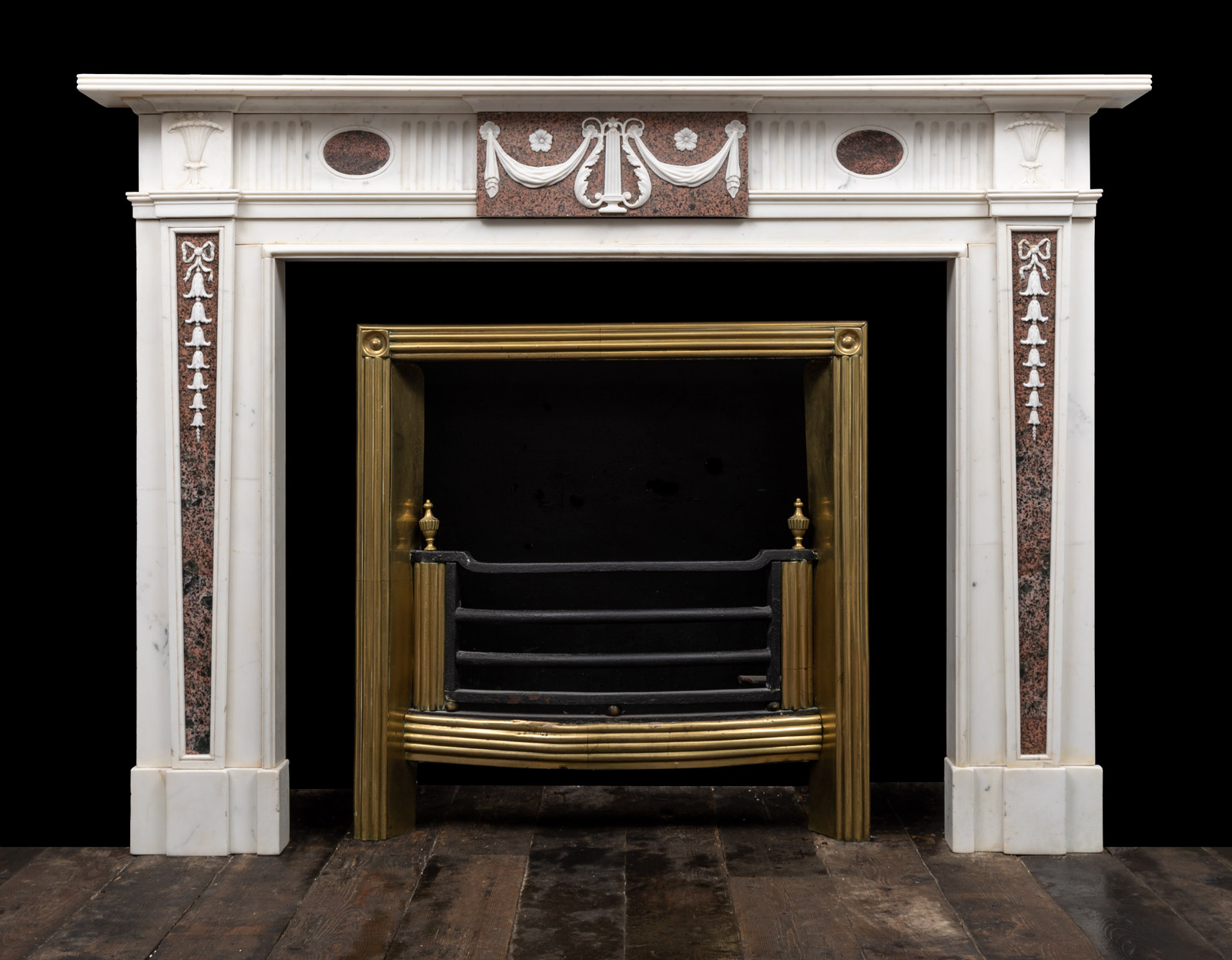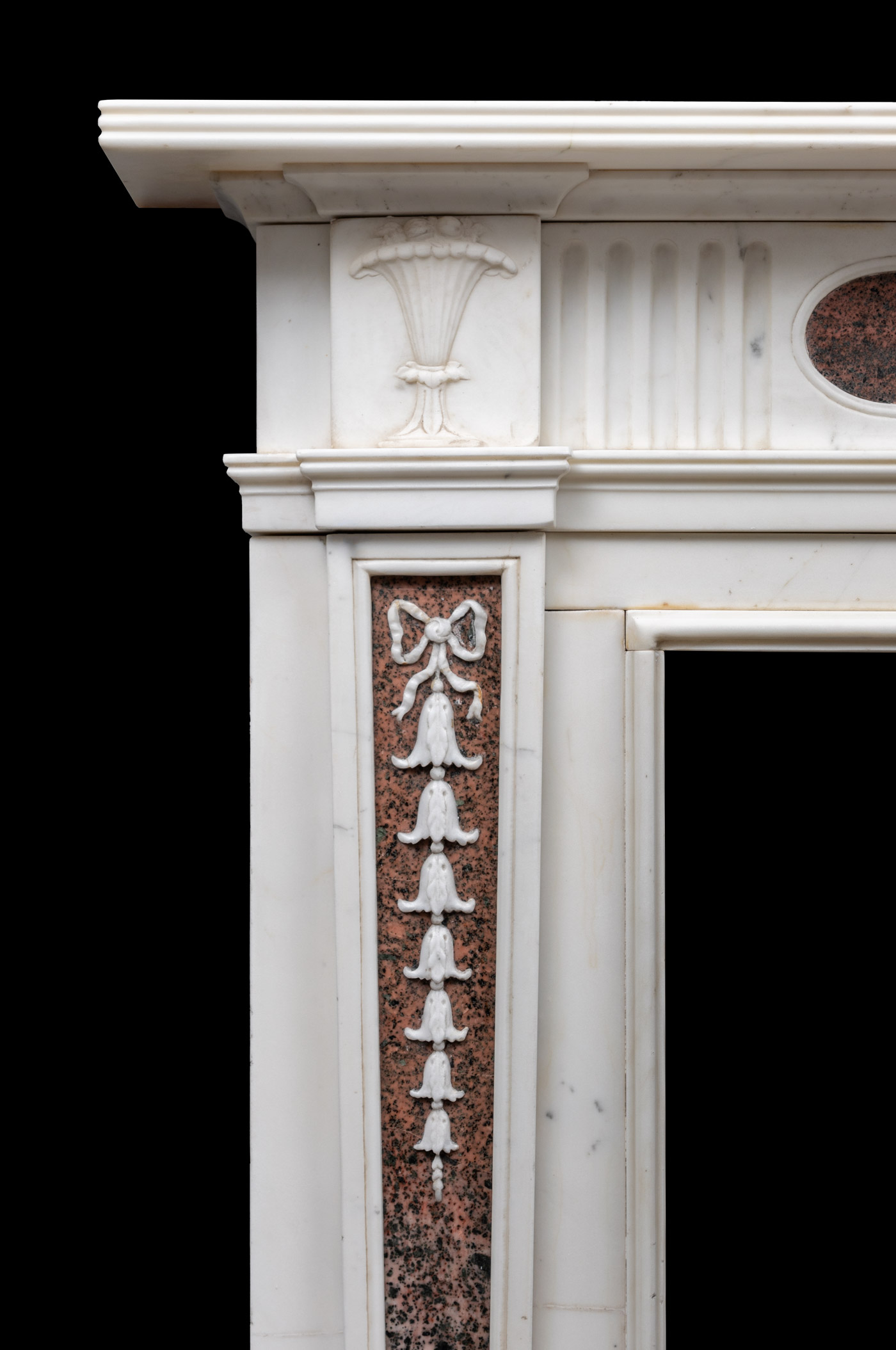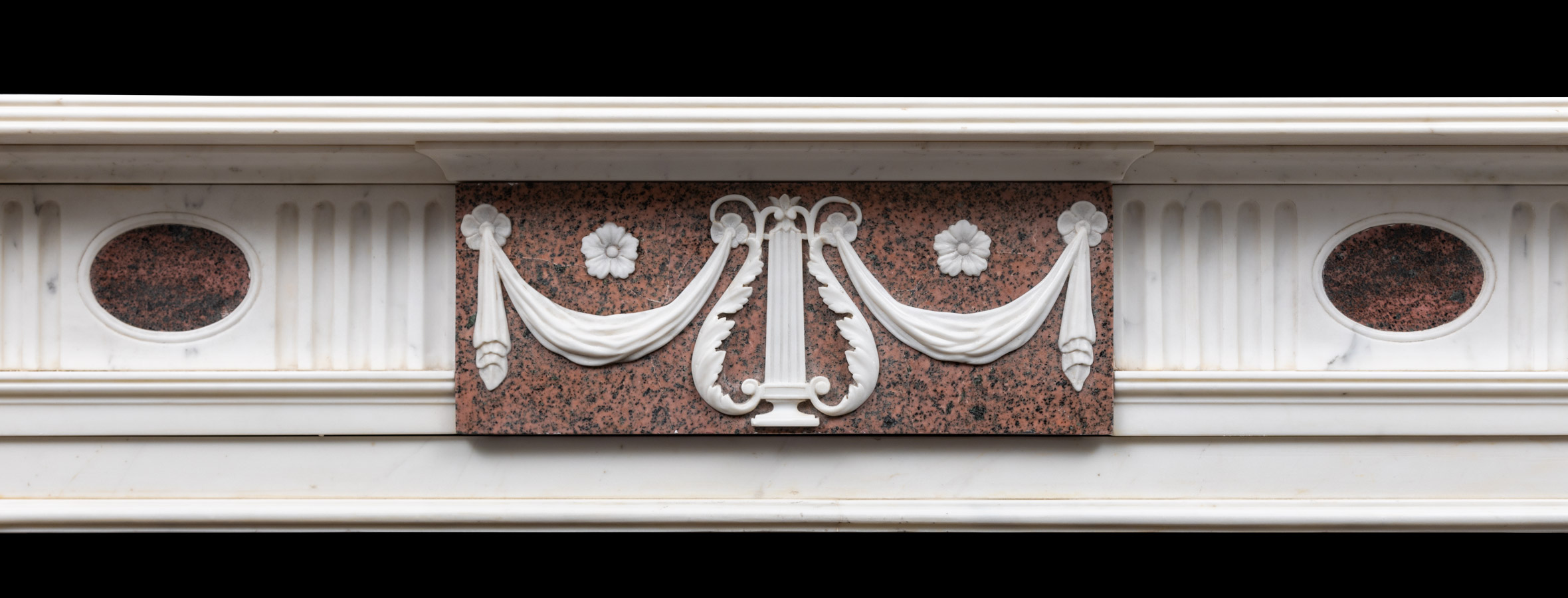Neoclassical Mantel – 19486
An antique neo-classical style marble chimneypiece from the late Georgian period
The tapering pilasters are inlaid with panels of Scottish Isla Rosa Tiree marble and overlaid with carved bellflowers descending in size and upheld by bow ribbons. The Tiree centre tablet has overlaid carved statuary, depicting drapes and a Lyre (ancient stringed musical instrument), to either side of the centre tablet are fluted frieze panels with oval inlays and classical urns blockings.
Circa 1800
Tiree Marble is from the Isle of Tiree, Scotland.
The aesthetic allure of this stone was reported in 1764 by Dr. John Walker, who started a small quarry. In 1789, the Duke of Argyll sent a Swiss geologist, Rudolf Raspe, to set up his own quarry in Balephetrish. It appears from the estate records of the 5th Duke of Argyll that he had a fascination with Tiree marble. Many of his inquiries and orders through his factor on Tiree between 1771 and 1805 have to do with quarrying and delivering the stone for his own use. Tiree marble was used in the interior of the Duke of Argyll’s Inverary Castle (built between 1744 and 1785) and his residence at Roseneath.
Measurements:
Width: 72" (1829mm)
Height: 52.5" (1334mm)
Depth: 7.5" (191mm)
Internal Measurements:
Width: 46.5" (1181mm)
Height: 40.5" (1029mm)
Price: £ POA
Product Code: 19486
Price: £ POA
Measurements:
Width: 72" (1829mm)
Height: 52.5" (1334mm)
Depth: 7.5" (191mm)
Internal Measurements:
Width: 46.5" (1181mm)
Height: 40.5" (1029mm)
Product Code: 19486

 Follow Us on Instagram!
Follow Us on Instagram!
 Pin Us on Pinterest!
Pin Us on Pinterest!




 Additional Images
Additional Images

